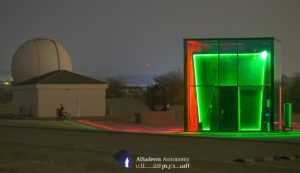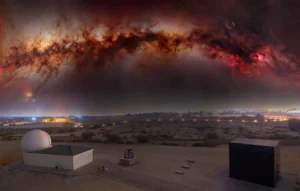You’re looking at one of our major research collaborations with the @nyuabudhabi . This is ASASSN-18ey (aka MAXIJ1820+070), a low-mass X-ray binary black hole transient about 10x the Sun’s mass. It is situated about 3kpc (parallax distance), or 9.8 light years, away from Earth in the Ophiuchus constellation.
This research project is led by Asst. Prof. David Russell, assistant professor in NYUAD specializing in the multi-wavelength studies of black holes and neutron stars.
We took on the confirmation and time-series optical monitoring of this LMXB blackhole system since its discovery in March 2018 by the All-Sky Automated Survey for SuperNovae (ASAS-SN).
For over a year, (April 2018 – October 1, 2019) we captured the X-ray binary’s variability—from its outburst, dimming, and re-brightening. It can be seen in the short animation prepared by our resident astronomer @aldrinb.gabuya.
X-ray binary system outbursts in optical wavelength are typically faint (ranging between magnitudes +15 to +20), and are not visible to the naked eye.
What makes ASASSN-18ey special is that its outbursts have been so bright that it’s easily detected in the optical wavelength. It reached its peak magnitude of +12.0V in March-April 2018, which gradually dimmed, and then went on its second outburst.




